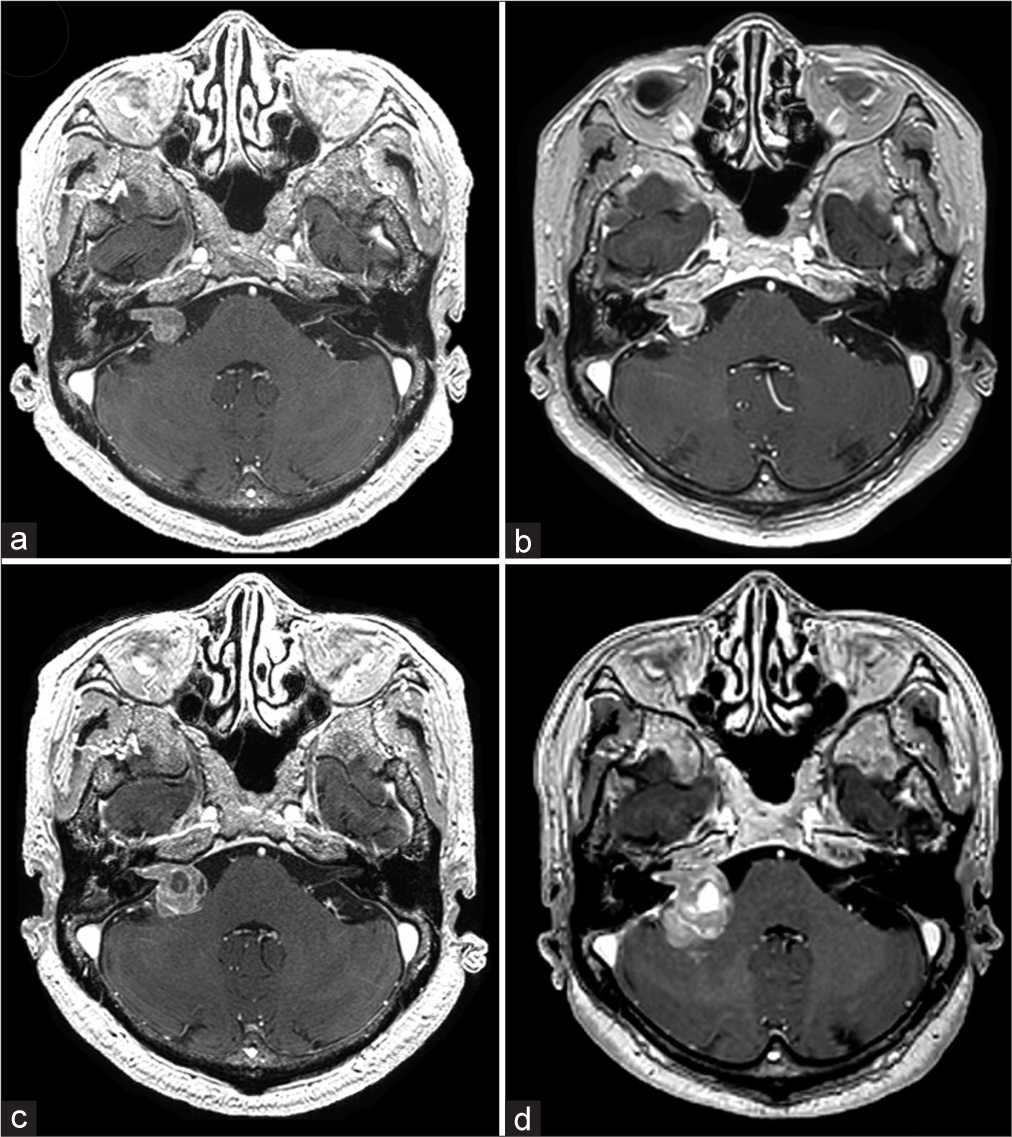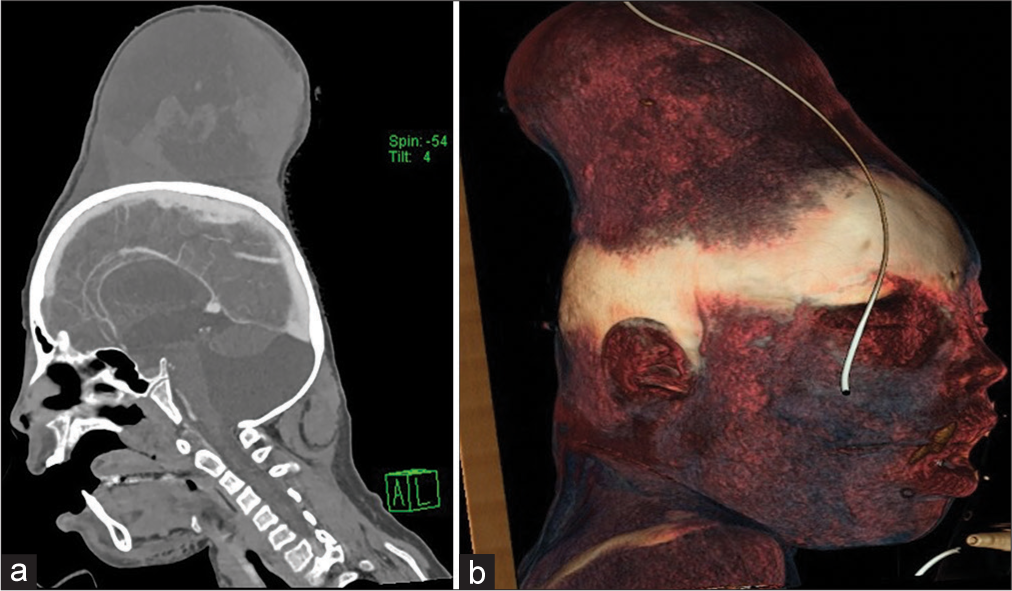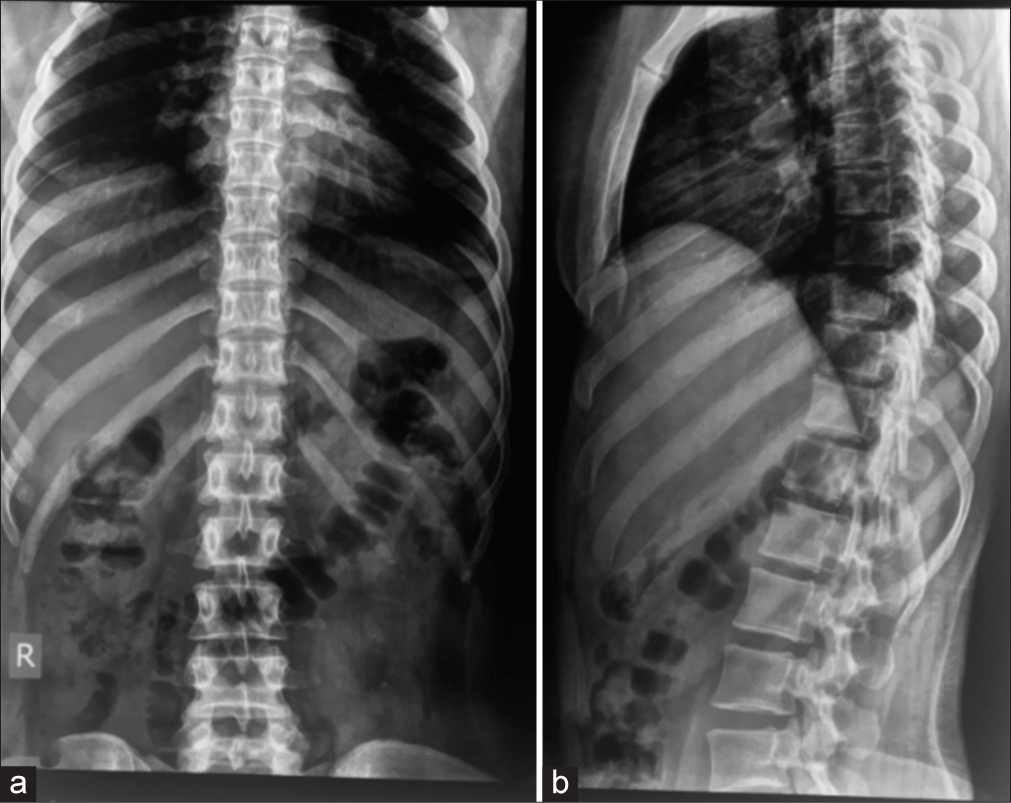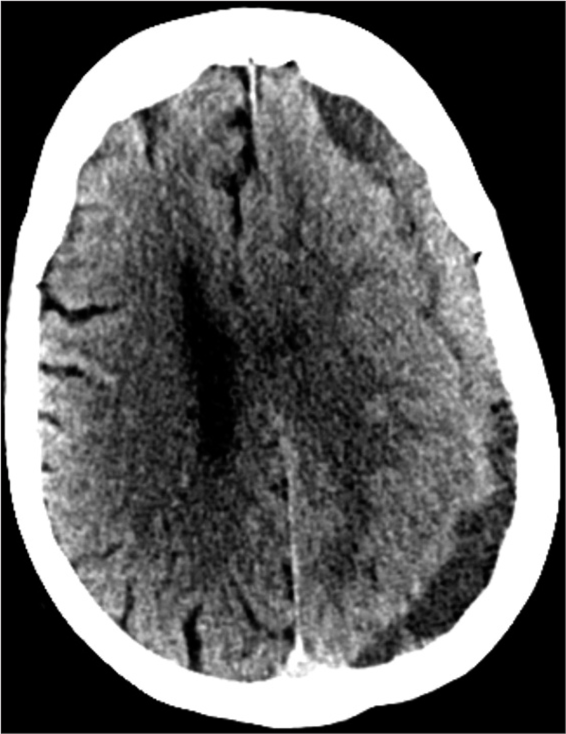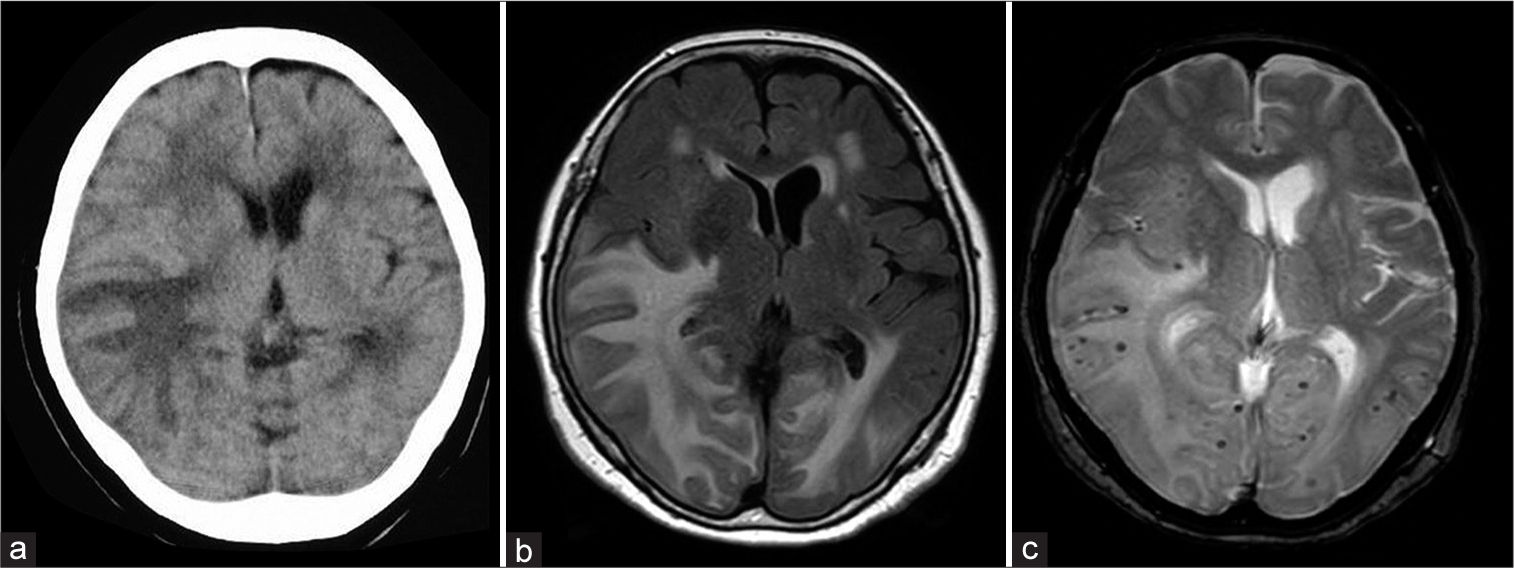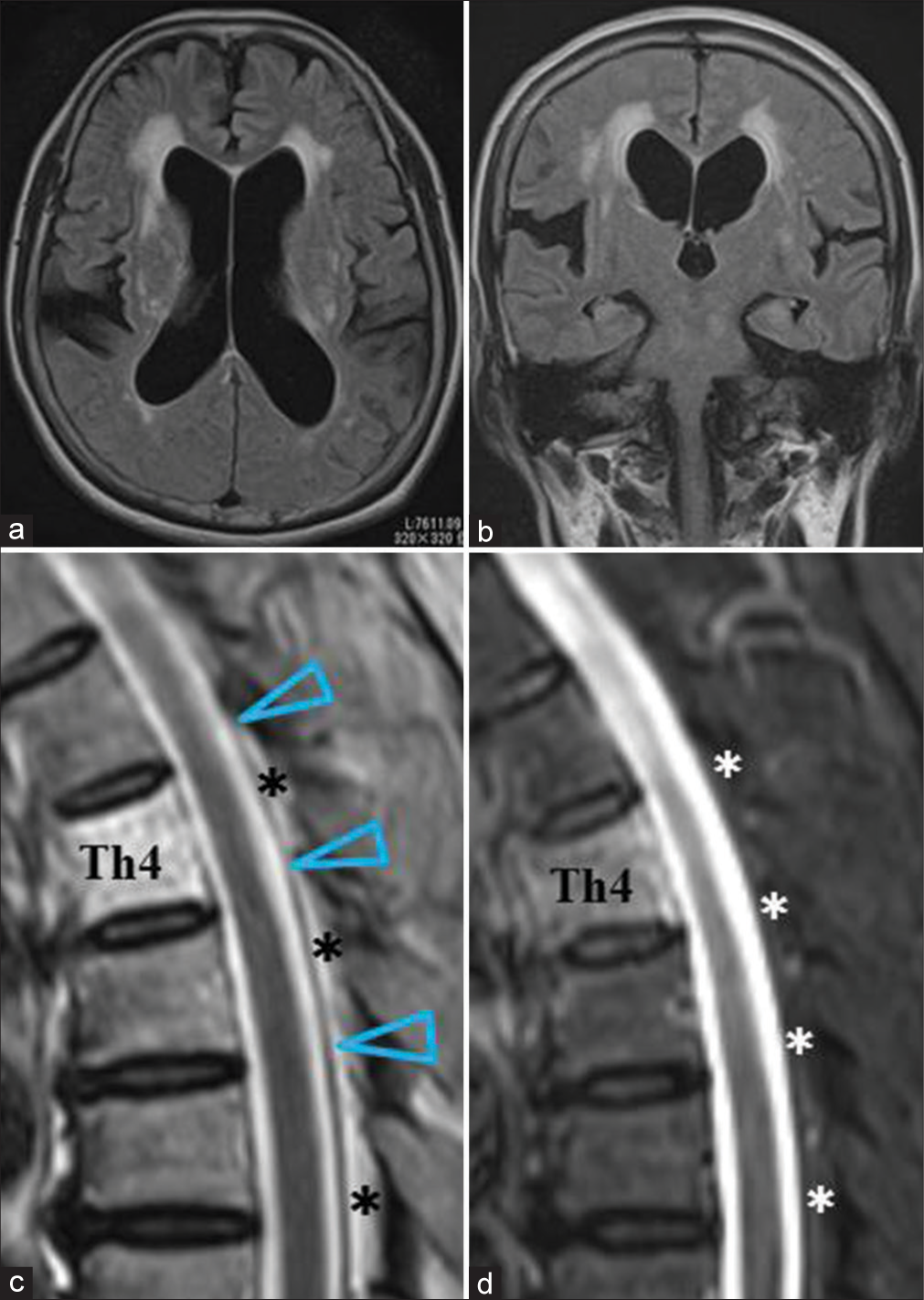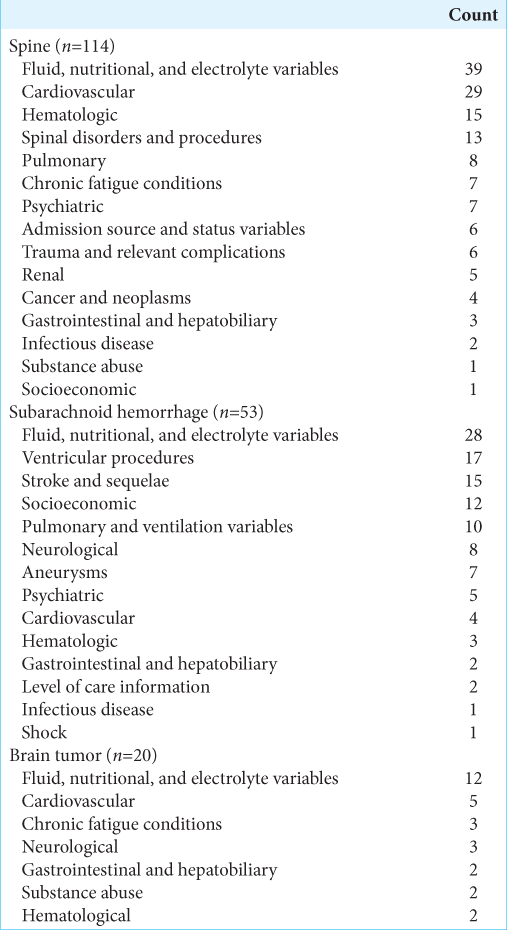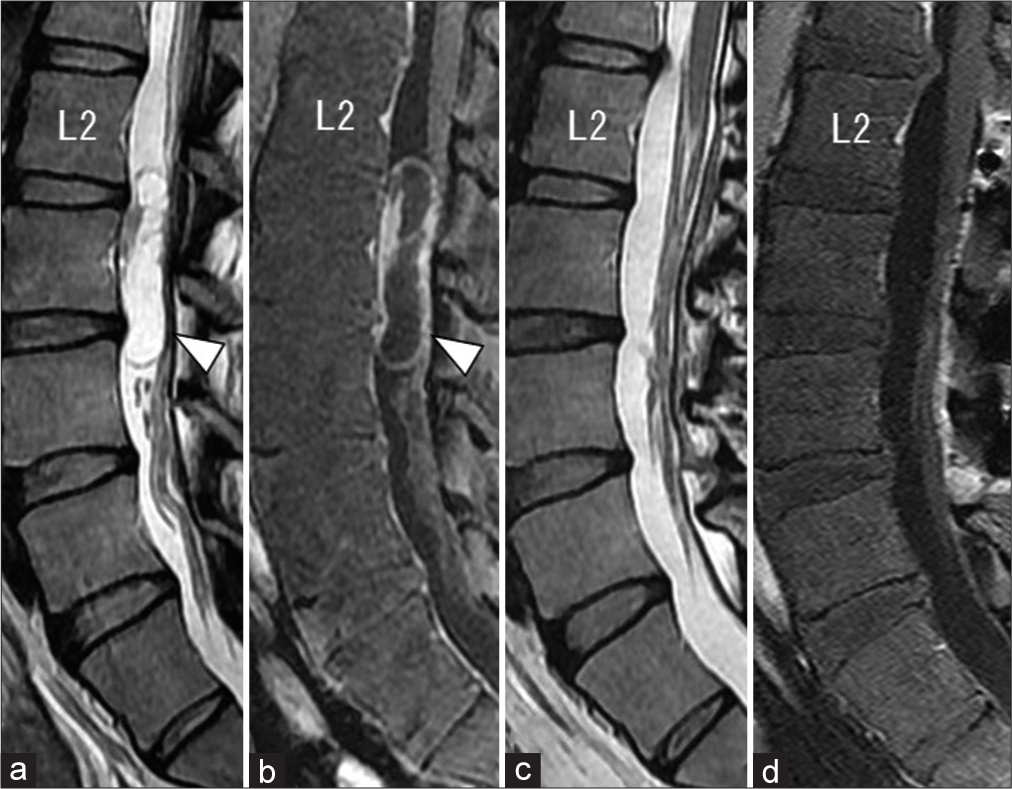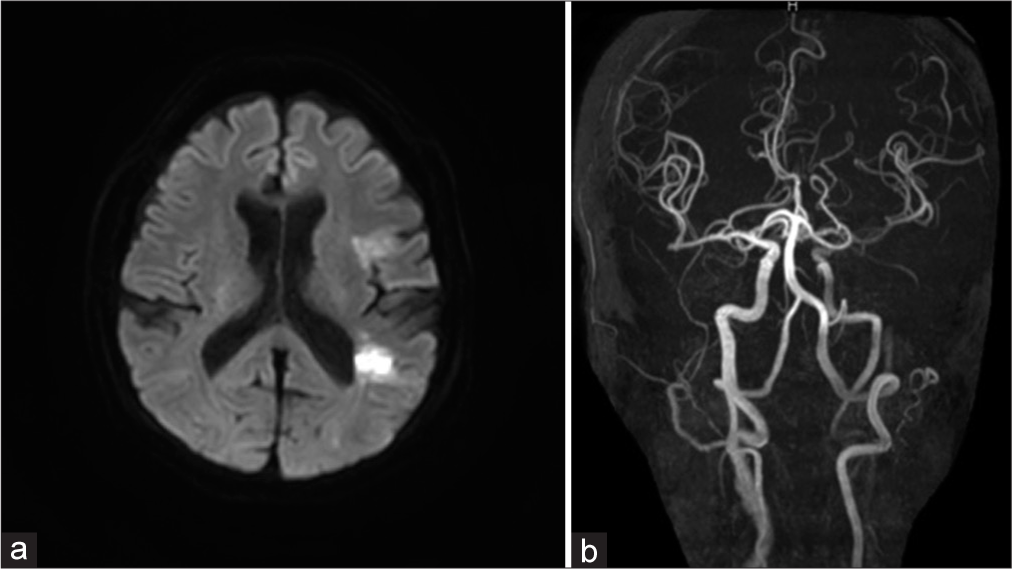Cerebellopontine angle metastasis of a neuroendocrine tumor mimicking vestibular schwannoma: A case report
Date of publication: 23-Jun-2022
Background: Neuroendocrine tumors (NETs) are uncommon neoplasms arising from neuroendocrine cells and are rarely associated with intracranial metastases.
Traumatic subgaleal hematoma in patient with Ehlers-Danlos syndrome: A rare case report
Date of publication: 23-Jun-2022
Background: A subgaleal hematoma (SGH) describes scalp bleeding in the potential space between the periosteum and the galea aponeurosis. This hematoma generally occurs after vacuum-assisted and forceps delivery, but may also be seen following head trauma. Despite its benign course, SGHs may complicate by life-threatening events.
Isolated costotransverse joint tuberculosis - A rare location for tubercular arthritis
Date of publication: 23-Jun-2022
Background: Posterior element involvement of the spine with tuberculosis (TB) is very uncommon.
Hidden treasures: Incidental findings in two cases of chronic subdural hematoma
Date of publication: 23-Jun-2022
Background: Extramedullary hematopoiesis (EMH) and plasmacytomas occurring within the cranium are rare entities.
Acute progression of cerebral amyloid angiopathy-related inflammation diagnosed by biopsy in an elderly patient: A case report
Date of publication: 23-Jun-2022
Background: Cerebral amyloid angiopathy-related inflammation (CAA-I) presents with slowly progressive nonspecific neurological symptoms, such as headache, cognitive function disorder, and seizures. Pathologically, the deposition of amyloid-β proteins at the cortical vascular wall is a characteristic and definitive finding. Differential diagnoses include infectious encephalitis, neurosarcoidosis, primary central nervous system lymphoma, and glioma. Here, we report a case of CAA-I showing acute progression, suggesting a glioma without enhancement, in which a radiological diagnosis was difficult using standard magnetic resonance imaging.
Dural sac shrinkage signs on spinal magnetic resonance imaging indicate overdrainage after lumboperitoneal shunt for idiopathic normal pressure hydrocephalus
Date of publication: 23-Jun-2022
Background: We previously found the usefulness of dural sac shrinkage signs (DSSSs), which are the anterior shift of the spinal cord and dura mater behind the cord, detected by magnetic resonance imaging (MRI) at the thoracic level for the diagnosis of spontaneous intracranial hypotension (IH). This is a retrospective survey on the usefulness of DSSSs for the early detection of iatrogenic IH caused by overdrainage through a lumboperitoneal shunt (LPS) for patients with idiopathic normal pressure hydrocephalus (INPH).
Early experience with patient-specific low-cost 3D-printed polymethylmethacrylate cranioplasty implants in a lower-middle-income-country: Technical note and economic analysis
Date of publication: 23-Jun-2022
Background: Polymethyl methacrylate (PMMA) cranioplasty, while widely prevalent, has limitations associated with freehand manual intraoperative molding. PMMA has been superseded by titanium or Polyetheretherketone implants, prefabricated commercially from preoperative CT scans, and boasting superior clinical and cosmetic outcomes. However, such services are extremely inaccessible and unaffordable in the lower-middle-income country (LMIC) settings. The study aims to describe, in detail, the process of making ultra-low-cost patient-specific PMMA cranioplasty implants with minimum resources using open-access software. We report the first such service from the public health-care system within Pakistan, a LMIC.
MedCDI: A technology-based documentation and quality improvement initiative in neurosurgery
Date of publication: 23-Jun-2022
Background: Clinical documentation of patient care alters coding accuracy of Medicare Severity Diagnosis-Related Groups (MS-DRGs), expected mortality, and expected length of stay (LOS) which impact quality metrics. We aimed to determine if neurosurgical quality metrics could be improved by facilitating accurate documentation and subsequently developed a mobile application and educational video to target areas of opportunity.
Long-term recurrence after surgery for schwannoma of the cauda equina
Date of publication: 23-Jun-2022
Background: Cauda equina tumors are rare primary spinal tumors. Histologically, the most common tumor arising from the cauda equina is a schwannoma. However, little is known about the long-term postoperative outcomes of cauda equina schwannoma. Here, we reviewed the median-to-long-term postoperative outcomes of eight of our own patients with schwannomas of the cauda equina.
A case of symptomatic carotid artery occlusion after aortic arch replacement treated with carotid-carotid crossover bypass
Date of publication: 23-Jun-2022
Background: Symptomatic common carotid artery (CCA) occlusion is rare and its treatment remains unestablished. Although cases of subclavian-to-carotid bypass have been reported, very few cases of carotid-tocarotid crossover bypass have been reported, despite its advantages. We report a case of Riles type 1A symptomatic CCA occlusion after aortic arch replacement that was treated with carotid-to-carotid crossover bypass with favorable outcomes.


